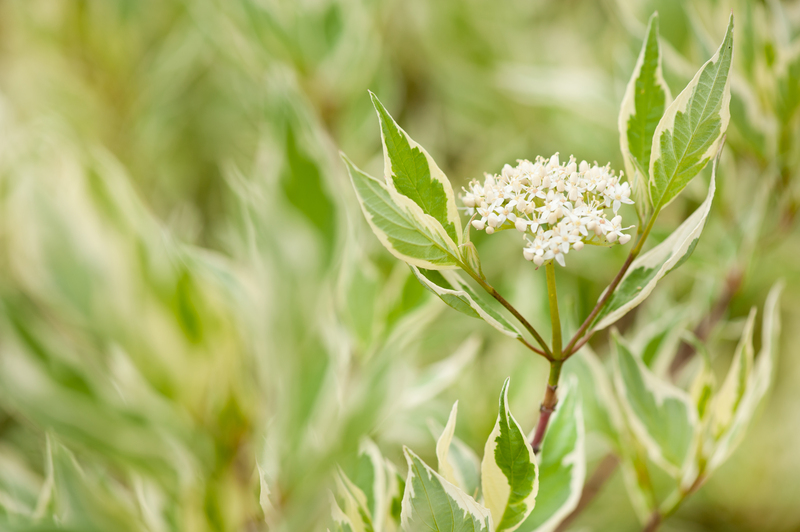Simplify Your Gardening with 5 Low Maintenance and Affordable Tips
Posted on 16/09/2025
Simplify Your Gardening with 5 Low Maintenance and Affordable Tips
Is your garden stressing you out, rather than giving you joy? With a little planning and the right strategies, you can create a stunning outdoor space that thrives with minimal fuss and expense. In this comprehensive guide, we share expert insights on how to simplify your gardening with low maintenance and affordable tips--perfect for busy people or anyone new to horticulture. Embrace these practical techniques, and enjoy a flourishing garden all year round!
Why Opt for Low Maintenance and Budget-Friendly Gardening?
Many dream of having a beautiful front or backyard, but time, costs, and energy often become obstacles. Low maintenance and affordable gardening strategies provide a solution. Here's why these approaches are becoming increasingly popular:
- Time saving: Spend less time on chores, more time enjoying your garden.
- Cost effective: Save money on water, fertilizers, and plants.
- Eco-friendly: Reduce water usage, minimize chemical use, and support local wildlife.
- Beginner friendly: Lower risks of plant failures boost your confidence.
With these benefits in mind, let's delve into five simple, budget-friendly ways to maintain a lush garden without the stress.

1. Choose the Right Low Maintenance Plants
The foundation of affordable and low maintenance gardening is plant selection. Picking the right species for your climate, soil, and sunlight conditions makes all the difference. These resilient plants thrive naturally, requiring minimal intervention:
Best Choices for Effortless Gardening
- Native plants: These are adapted to your local environment, making them less prone to diseases and less dependent on extra watering or fertilization. Examples include coneflowers, black-eyed Susans, and lilacs.
- Succulents and cacti: Perfect for drought-prone areas, succulents like sedum or jade plant require little care.
- Perennials: These comeback every year, reducing replanting costs and effort. Consider hostas, daylilies, and lavender.
- Ground cover plants: Vinca, creeping thyme, and Ajuga stop weeds and cut down on mowing.
When you simplify your landscaping by prioritizing durable, easy-care plants, your time and wallet will thank you!
2. Mulch: The Gardener's Secret Weapon
Mulching is crucial for anyone looking for low maintenance gardening tips. Whether you're on a tight budget or limited for time, mulching offers instant and long-lasting benefits:
- Suppresses weeds: Mulch deprives weed seeds of light, preventing them from sprouting.
- Retains soil moisture: Water evaporates more slowly, meaning you can water less often.
- Improves soil health: Organic mulches break down, adding nutrients.
- Regulates temperature: Roots remain protected, even during extremes of heat or frost.
Types of Mulch
- Organic: Wood chips, bark, straw, leaves, compost. These decompose over time to feed your soil.
- Inorganic: Stones, gravel, landscape fabric. These don't decompose, making them ultra-low maintenance for pathways or non-planted areas.
Tip: Lay down a thick layer (2-4 inches) around your plants, avoiding the base of stems and trunks for best results. Renew organic mulches annually for continued benefits.
3. Smart Watering Techniques: Save Time and Money
Efficient watering is integral to affordable and easy gardening. Incorrect watering leads to wasted resources and unhealthy plants. Follow these cost-effective, low-effort strategies:
Water Less, Water Smarter
- Water deeply, not frequently: Encourages plant roots to grow down, making them more drought-tolerant.
- Use soaker hoses or drip irrigation: Delivers water directly to plant roots, minimizing evaporation and runoff.
- Capture rainwater: Set up a rain barrel under your downspout. It's free and eco-friendly!
- Water early or late: Water in the early morning or evening when evaporation rates are lowest.
- Group plants by water needs: Place drought-tolerant species together and thirsty plants in another area to stop overwatering.
By optimizing your watering strategies, you conserve water and encourage healthier, more self-sufficient plants.
4. Reduce Lawn Size and Simplify Borders
Lawn care is the most time-consuming and costly aspect of many gardens. By rethinking your grassy areas and borders, you can cut down on both effort and expenses:
Low Maintenance Garden Design Tips
- Use groundcovers or hardscaping: Replace sections of lawn with low-growing perennials or gravel patios for instant savings.
- Opt for raised beds: Raised garden beds are easy to maintain, require less weeding, and offer better control over soil quality.
- Go for simple lines: Curvy or fussy borders make mowing and trimming harder. Stick to easy, straight-edged designs.
- Select slow-growing shrubs: Planting varieties like boxwood or juniper means less frequent pruning.
Letting go of a perfect lawn doesn't mean giving up a beautiful yard. With creative design, your space will be just as striking and even more enjoyable--with far less upkeep.
5. Feed and Amend the Soil--The Easy Way
A strong garden begins with healthy soil, but you don't need to spend hours mixing compost or hauling fertilizer. Here are some simple, low-cost ways to enrich your planting beds for low maintenance gardening:
Effortless Soil Improvement Strategies
- Top-dress annually with organic compost: Just spread a thin layer over the soil. Earthworms and rain will do the mixing for you.
- Leave grass clippings after mowing: This supplies natural nitrogen and aids water retention.
- Grow green manure in off-seasons: Plants like clover or alfalfa fix nutrients in place, boost fertility, and suppress weeds.
- Skip heavy digging: A no-dig approach protects soil structure and preserves beneficial organisms.
With these techniques, your soil will be rich, fertile, and ready for robust growth--without breaking your back or the bank!
Bonus: Embrace Garden Simplicity with Efficient Tools and Organization
It's not just about the plants--having the right tools and keeping things organized can also make your gardening life easier and cheaper. Here's how:
- Invest in quality over quantity: Essential tools like a sharp pruner, sturdy trowel, and watering can are all you need for basic tasks.
- Store tools near your garden: Hang them in a shed, garage, or weatherproof storage box for quick access and to prevent rust.
- Keep a small notebook: Jot down plant types, watering schedules, and seasonal tasks to stay on track and avoid mistakes.
- Repurpose household items: Old buckets, yogurt containers, or kitchen spoons can become handy gardening tools--saving you money and reducing waste.

Frequently Asked Questions about Easy and Affordable Gardening
How can I reduce my garden maintenance further?
Focus on automating repetitive tasks--like using a programmable watering timer, planting densely to choke out weeds, and minimizing non-essential features such as fish ponds or elaborate flowerbeds.
What is the cheapest way to start a low maintenance garden?
Start small: Use seeds or cuttings instead of store-bought plants, swap plants with neighbors, and compost your kitchen scraps to enrich soil for free.
What if I want color and beauty without extra effort?
Choose perennials with long bloom times (like coneflowers, salvia, or hardy geranium) and evergreen shrubs for year-round interest. Mulch with bark--it's attractive and practical!
How do I garden with limited space?
Containers, vertical gardens, and hanging baskets offer big rewards for little space and can be filled with low maintenance, drought-tolerant plants perfect for balconies or small patios.
Conclusion: Enjoy a Beautiful, Hassle-Free Garden
Simplifying your gardening routine doesn't mean sacrificing beauty. With the right selection of plants, strategic mulching, smart watering, thoughtful garden design, and easy soil care, your yard or balcony can thrive year after year--with minimal time and money invested.
Start today with these five proven low maintenance and affordable gardening tips--your future self, your wallet, and the environment will all reap the rewards!
For more inspiration and easy gardening tips, bookmark this guide and revisit whenever you need a helping hand or fresh ideas. Happy gardening!

